Animals in Africa are a beautiful sight to behold. Although I haven’t made it to the continent yet, one of my biggest dreams is to go on a safari in Kenya. Even if we can’t make it there right now, we can all dream together by exploring some of the animals in Africa.
I’ve compiled a list of beauties that you can find in Africa.
Key facts:
- Elephants, rhinoceros, wildebeests, cheetahs, zebras, and lions are some of the most recognized animals in Africa.
- According to some estimates, 1,000 mammal species and 1,500 bird species call Africa home.
- Wildlife in Africa represents some of the most iconic animals on the planet.
Animals in Africa
Ready to explore some of the most iconic animals of Africa? Take a look at the list I’ve pulled together below. Although this list doesn’t include every single animal on the continent, it does offer a closer look at many of the animals that live in Africa.
Wildebeest
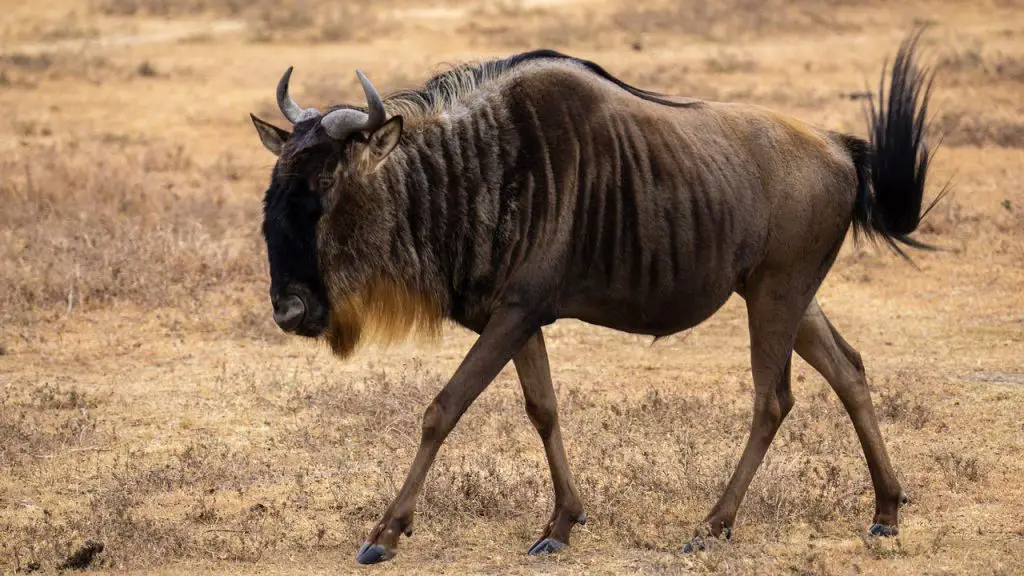
The wildebeest, scientifically known as Connochaetes, are iconic creatures that roam the vast landscapes of Africa. These remarkable animals are characterized by their shaggy mane and distinctively curved horns. With a mix of dark brown and gray fur, wildebeests cut a striking figure against the savannah backdrop.
One of the most awe-inspiring spectacles involving wildebeests is the Great Migration. Every year, millions of these resilient animals partake in a challenging journey across the Serengeti and Maasai Mara ecosystems, driven by the search for water and greener pastures.
Despite their resilient nature, wildebeests face conservation concerns. Habitat loss due to human encroachment and poaching pose threats to their population. Conservation efforts, including protected areas and anti-poaching measures, are crucial to ensuring the survival of these extraordinary creatures and preserving the natural balance of Africa’s wilderness.
Zebra
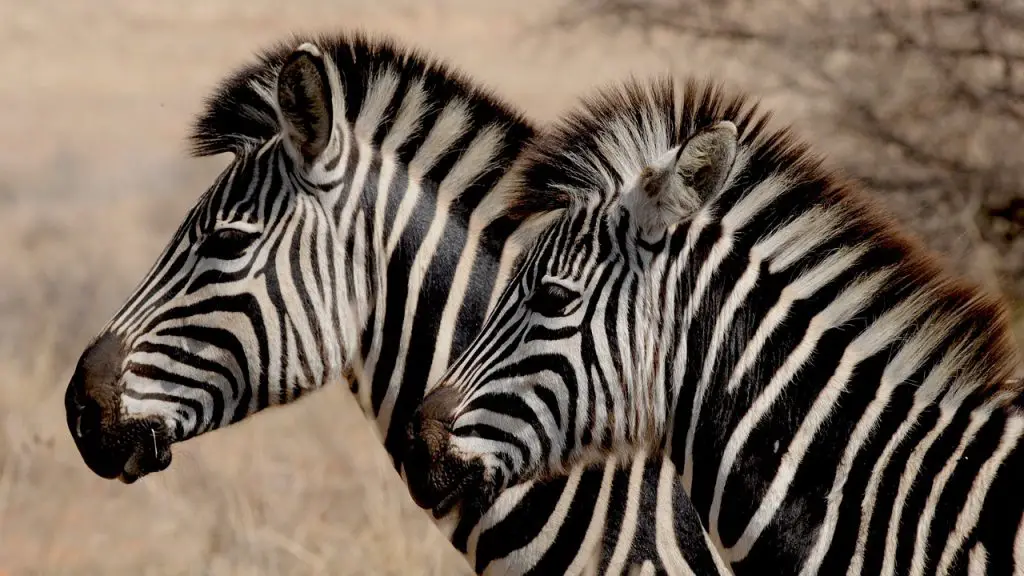
The zebra (Equus quagga) is a captivating sight on the African plains. Recognizable by its striking black and white stripes, the zebra’s unique pattern serves as camouflage, and possibly a cooling mechanism. Their tall, slender bodies are equipped with powerful legs and nimble hooves, allowing them to swiftly navigate their grassland habitats.
Zebras are known for forming tight-knit groups, often seen grazing together in harmony. When danger arises, their iconic zigzag running pattern confuses predators, making them elusive prey.
Lion
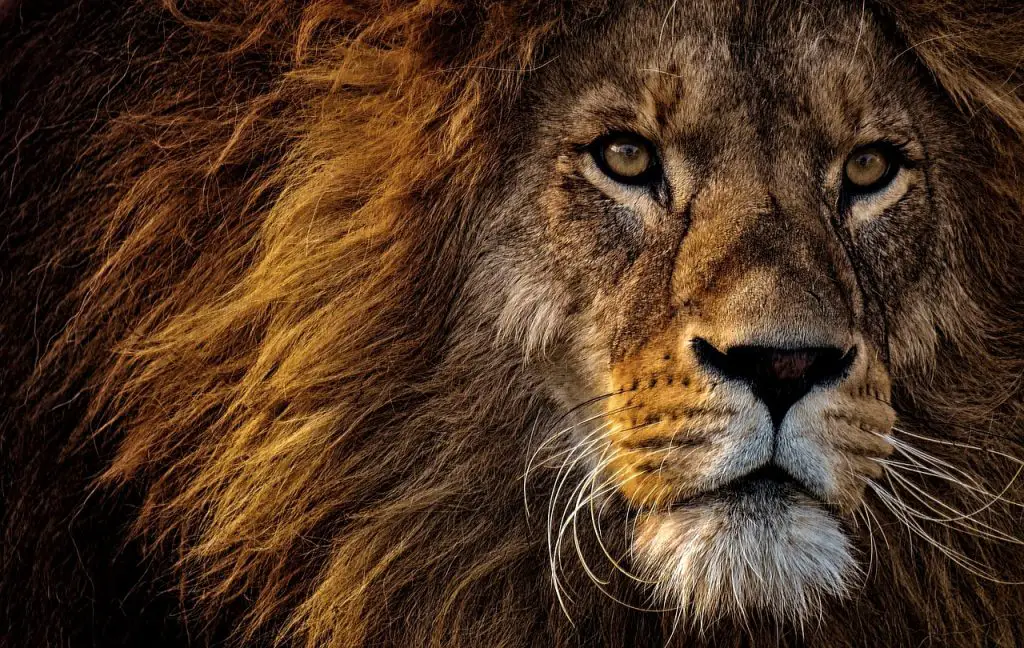
The lion (Panthera leo) stands as one of the most iconic animals in Africa. Renowned for their golden coats and impressive manes, male lions exhibit luxurious manes that signify their age and dominance. With powerful bodies and sharp claws, lions are adept hunters and can take down prey many times their size, showcasing their apex predator status.
Lions are highly social animals that reside in groups known as prides. These prides consist of related lionesses and their offspring, led by a dominant male lion. While lionesses collaborate to strategize and execute hunts, the male’s role is to defend the territory and protect the pride. This social structure ensures the survival and thriving of their young and contributes to the ecosystem’s balance.
Despite their regal status, lions face significant conservation challenges. Habitat loss, human-wildlife conflict, and poaching threaten their populations. The International Union for Conservation of Nature (IUCN) lists lions as “Vulnerable.” Various conservation organizations and initiatives are working diligently to protect these iconic big cats by establishing protected areas, implementing anti-poaching measures, and promoting coexistence with local communities. Preserving the habitat and addressing these threats are essential to securing a future where lions continue to reign over the African savannah.
Cheetah
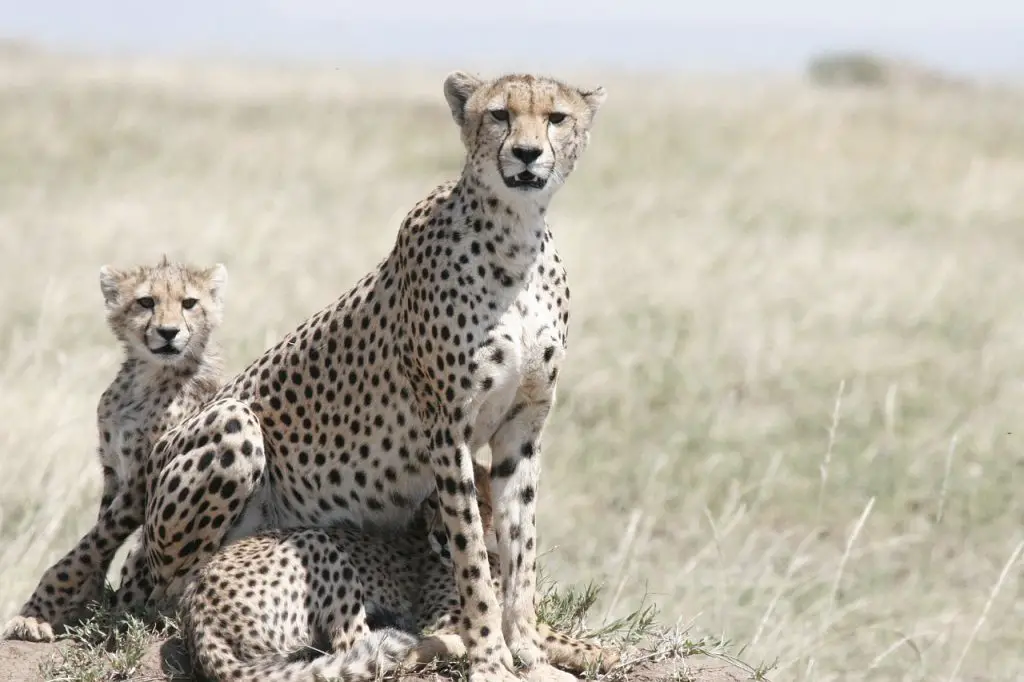
The cheetah, scientifically known as Acinonyx jubatus, is a speedy predator. Recognizable by its distinctive black “tear marks” on the face, the cheetah is built for speed with its slender body, long legs, and non-retractable claws that act like cleats for traction during high-speed chases.
Cheetahs are renowned as one of the fastest land animals, capable of reaching speeds of up to 70 miles per hour in short bursts, covering distances of over 1,500 feet. Their incredible acceleration and agility are adaptations for hunting agile prey like gazelles and impalas. Unlike other big cats, cheetahs lack the brute strength for extended combat, relying instead on their speed and stealth to secure meals.
Elephant
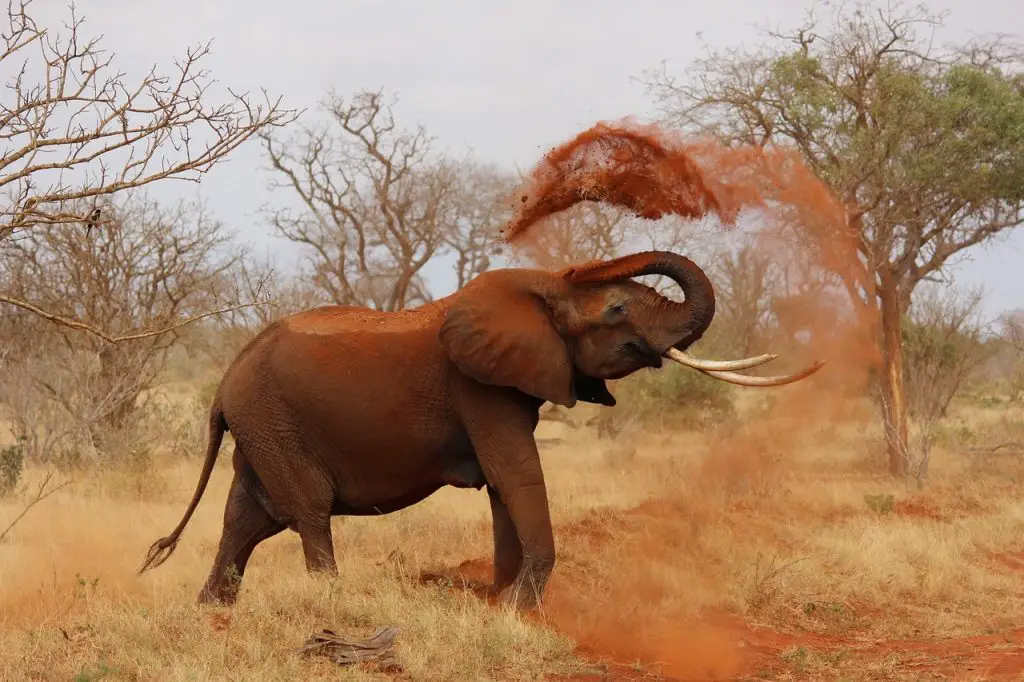
The African elephant commands both awe and admiration as the continent’s largest land mammal. These creatures are characterized by their immense size, distinctively long trunks, and ivory tusks. With their thick, wrinkled skin, they possess a natural cooling mechanism that helps them thrive in diverse African landscapes.
African elephants showcase a remarkable level of intelligence and social complexity. They form tight-knit family units led by matriarchs, who guide their herds’ movements and impart crucial knowledge across generations. Elephants communicate through a range of vocalizations, body language, and seismic signals, exhibiting a deep level of emotional connection and cooperation.
Rhinoceros
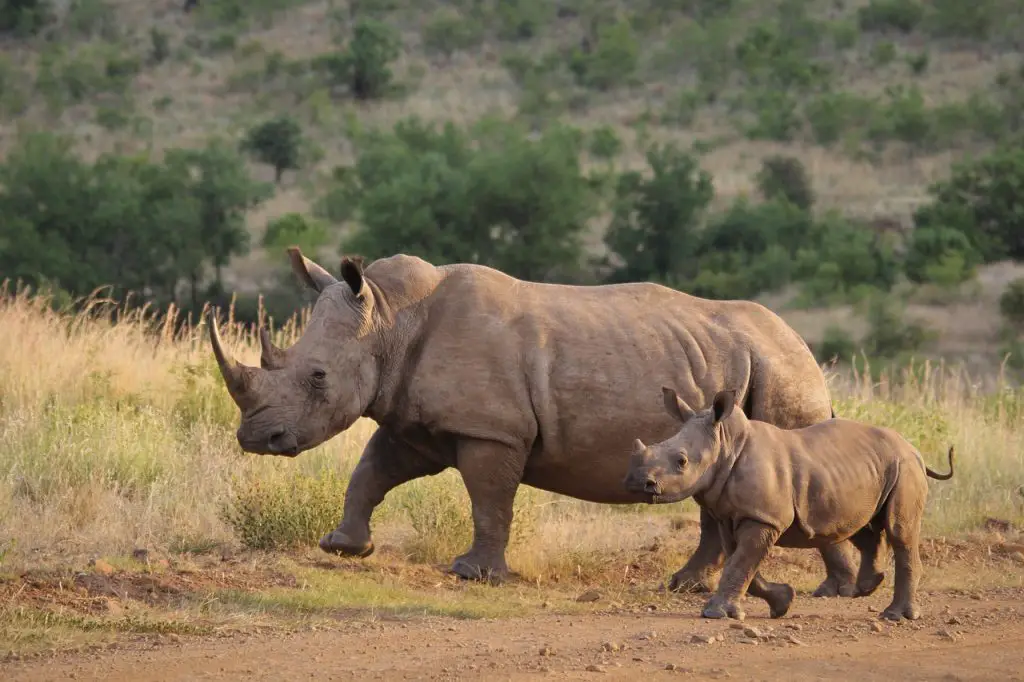
The rhinoceros, scientifically known as Rhinocerotidae, stands as a powerful presence in Africa’s ecosystems. These robust creatures are instantly recognizable by their massive size, thick skin, and distinctive horns.
Rhinos come in two African species: the white rhinoceros, known for its broad mouth adapted for grazing, and the black rhinoceros, recognized by its pointed upper lip suited for browsing leaves and shrubs.
Rhinoceros are noteworthy for their ancient lineage, having roamed the Earth for millions of years. Despite their imposing stature, they are herbivores, feeding primarily on vegetation.
Tragically, rhinos are critically endangered due to relentless poaching and habitat loss. Their horns, often targeted by poachers for their perceived medicinal and ornamental value, have pushed these magnificent creatures to the brink of extinction. Conservation efforts are of utmost importance, involving anti-poaching initiatives, habitat protection, and community engagement.
Giraffe
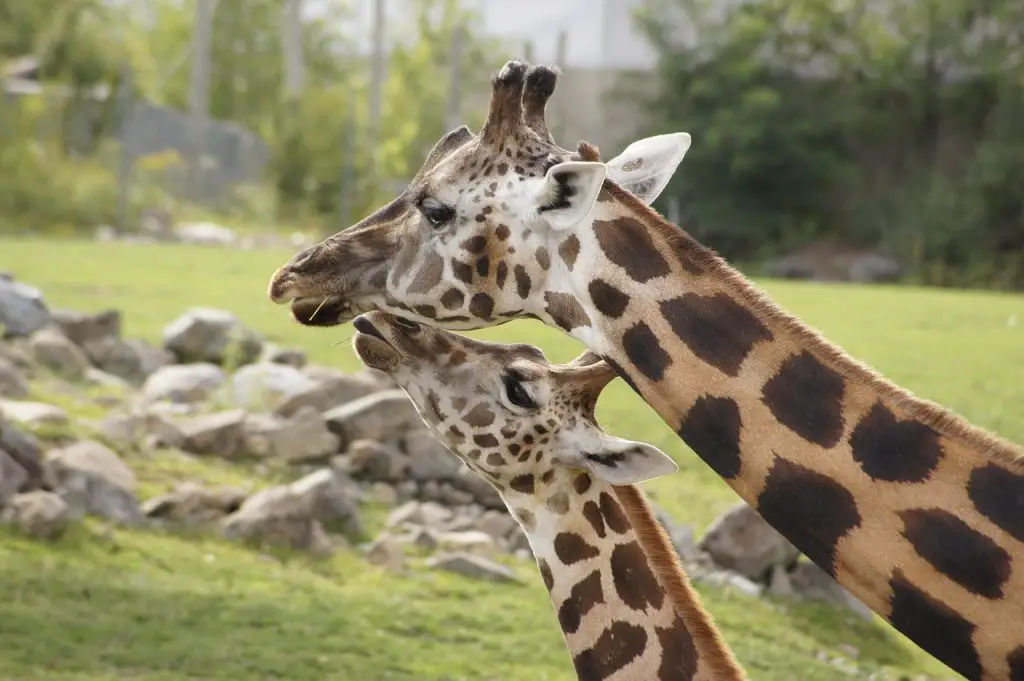
The giraffe (Giraffa camelopardalis) graces the African savannah with its towering presence. These gentle giants are instantly recognizable by their long necks, unique spotted coats, and gracefully curved ossicones atop their heads. With their remarkable height and slender bodies, giraffes are well-adapted to reach the highest leaves in the treetops.
Giraffes exhibit captivating behaviors, such as the “necking” ritual where males engage in gentle combat using their necks as weapons to establish dominance. Despite their towering appearance, they have only seven neck vertebrae, similar to humans, due to elongation rather than increased numbers. These extraordinary animals also possess a prehensile tongue that can stretch up to 18 inches, allowing them to grasp leaves and strip them from branches.
Wild dog
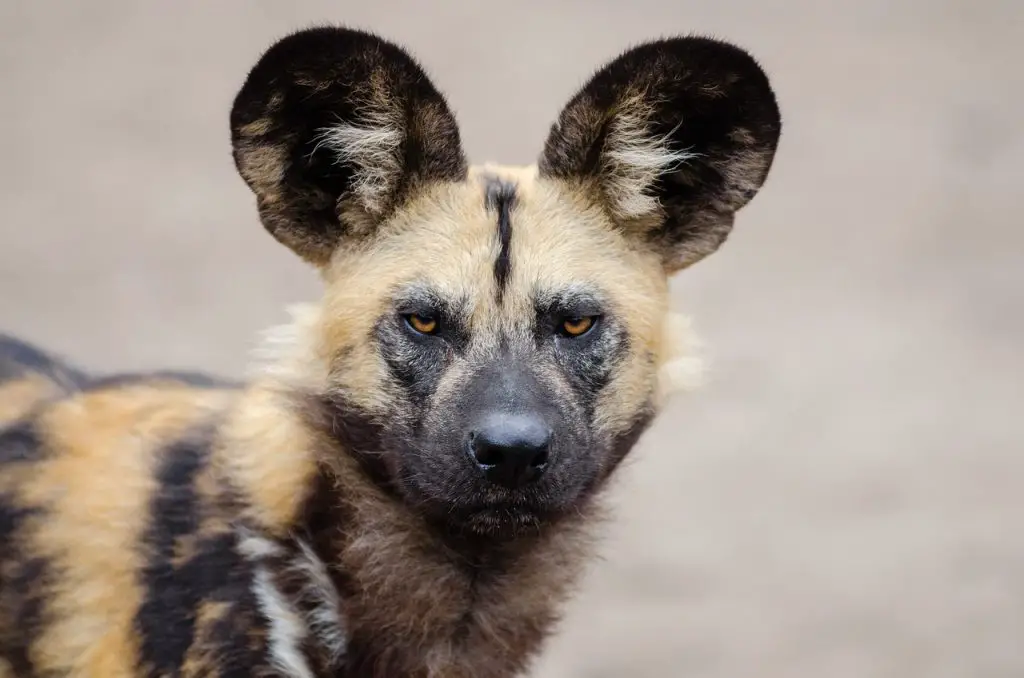
The African wild dog (Lycaon pictus) is a striking animals characterized by their unique coat patterns of black, white, and tan patches, making each individual easily distinguishable. With large rounded ears and a lean, athletic build, wild dogs are built for endurance and teamwork in the hunt.
Wild dogs are renowned for their exceptional social structure. They live in tight-knit packs led by an alpha pair, and their cooperative hunting strategies are impressive, with members working together to chase down and subdue their prey. Their incredible teamwork allows them to take down animals larger than themselves, showcasing their prowess as highly efficient predators.
Hippopotamus
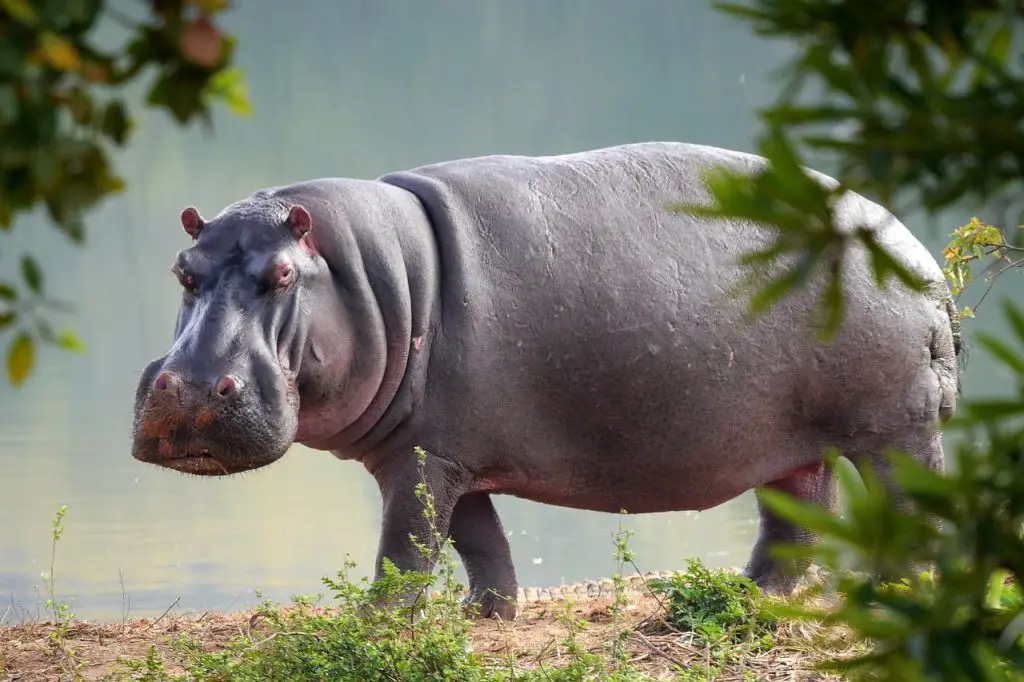
The hippopotamus (Hippopotamus amphibious) creates an imposing presence in Africa’s waterways. These hefty creatures are easily identifiable by their massive size, barrel-shaped bodies, and signature wide mouths that reveal their formidable tusks.
Despite their seemingly sluggish appearance, hippos are incredibly agile swimmers and can even run surprisingly fast on land. Noteworthy among their behaviors is their semi-aquatic lifestyle, spending much of their time in water to keep their thick skin cool and protected from the sun.
Hippos are also known for their aggressive and territorial nature, particularly when it comes to protecting their watery domains. Their vocalizations, including grunts and roars, are used for communication and asserting dominance.
Nile Crocodile
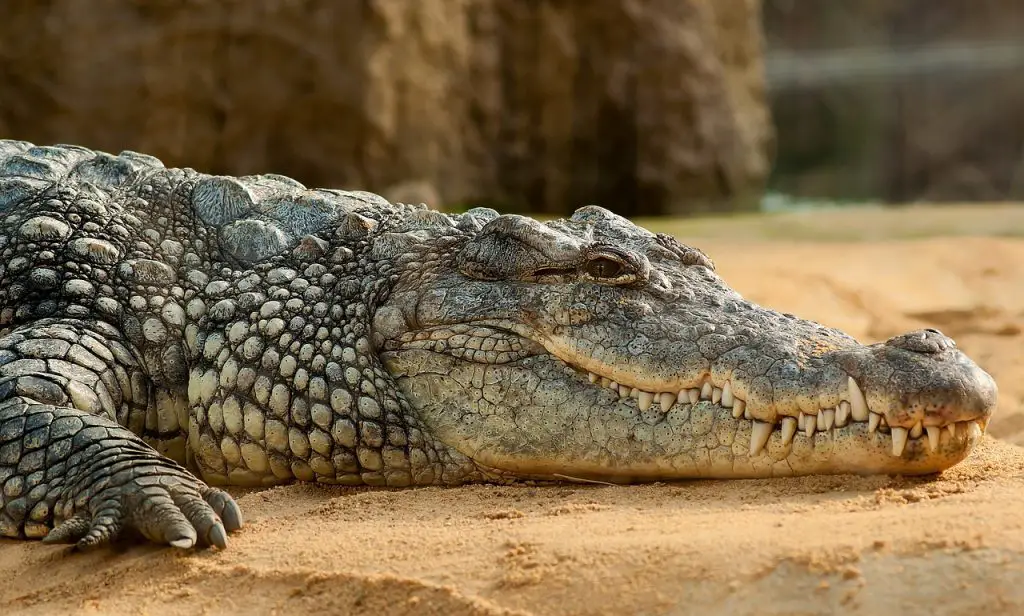
The Nile crocodile (Crocodylus niloticus) is a fearsome predator that lurks in Africa’s waters. These formidable creatures are instantly recognizable by their powerful jaws, armored bodies, and iconic V-shaped snouts. With their impressive size and stealthy hunting skills, Nile crocodiles are apex predators in their ecosystems.
The hunters have remarkable patience and a strategic approach to hunting. Nile crocodiles often lie in wait near the water’s edge, using their excellent camouflage to surprise unsuspecting prey. With a lightning-fast strike, they can capture animals as large as wildebeests and zebras, and their strong jaws and serrated teeth make quick work of their catch.
Cape Buffalo
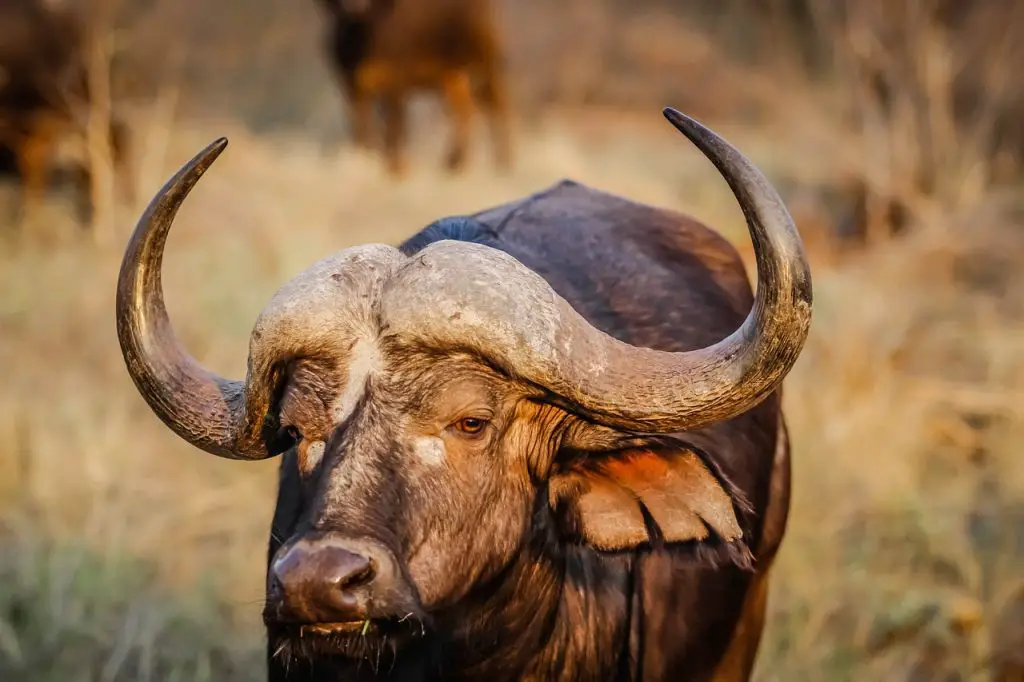
The Cape buffalo (Syncerus caffer) are powerful animals in Africa. They are distinguishable by their massive build, distinctive horns that curl backward, and a coarse, dark coat. Cape Buffalos have an unpredictable behavior and herd-centric nature.
The buffalos have a strong social structure and cooperative instincts. Cape buffaloes form tight-knit herds, often led by older and more experienced females. Their collective defense mechanism is particularly impressive – when faced with a predator, they unite to form a protective circle, using their sheer numbers to deter potential threats.
Cape buffaloes are known for their resilience and tenacity. Despite their appearance as slow-moving grazers, they can be surprisingly agile and fiercely defend themselves when cornered. These herbivores play a crucial role in maintaining the health of their ecosystems by shaping vegetation through their grazing and acting as prey for predators.
Black Mamba

The black mamba, scientifically known as Dendroaspis polylepis, is a fearsome snake that inhabits the African continent. Despite its name, its coloration can vary from gray to brown, with the inside of its mouth being jet black. Its slender body, which can reach lengths of up to 14 feet, is designed for swift movement and agility.
Great White Shark

The great white shark (Carcharodon carcharias) is a legendary apex predator patrolling the coastal waters of Africa. These majestic creatures are instantly recognizable by their massive size, powerful bodies, and distinctive triangular dorsal fin. With their striking white undersides and grayish upper bodies, they possess a stealthy appearance that aids in ambushing prey from below.
Great white sharks are opportunistic hunters, known for their exceptional sense of smell that helps them locate even the faintest scent of potential prey. They are known to breach the water’s surface during hunting, launching their bodies into the air to surprise and capture seals, sea lions, and other marine mammals.
Great white sharks have expansive migratory patterns, often covering vast distances across oceans. Despite their fearsome reputation, they’re also a vulnerable species due to overfishing, habitat destruction, and accidental capture. Conservation efforts to protect these magnificent creatures include marine protected areas, international agreements, and raising awareness about their vital role in maintaining marine ecosystems.
Ostrich

The ostrich (Struthio camelus) is a distinctive bird that roams the diverse landscapes of Africa. These avian giants are recognized by their long necks, powerful legs, and flightless status. With their impressive height and swift running ability, ostriches are well-adapted to the arid savannahs they inhabit.
Ostriches hold the title of the world’s largest and heaviest birds. Despite their flightlessness, they’re incredibly fast runners, capable of reaching speeds of up to 45 miles per hour. Another intriguing fact is that ostriches have two-toed feet, unlike most birds which have three or four toes. Their eggs are also remarkable for being the largest of any bird species.
They’re also for their distinctive mating dances, during which males perform elaborate displays to attract females, often accompanied by booming calls.
Hornbills

Hornbills, which includes birds in the sceidnfic family Bucerotidae, are captivating avian wonders that grace the skies and forests of Africa. These birds are distinguished by their unique appearance, with large beaks and often vibrant plumage. With a variety of species inhabiting different regions, hornbills add a touch of charm and diversity to Africa’s birdlife.
These birds possess distinctive calls and vocalizations that vary from species to species, contributing to the auditory richness of Africa’s wilderness.
One of the most striking behaviors of hornbills is their nesting habits. Female hornbills seal themselves inside tree cavities using a mix of mud, droppings, and other materials, leaving only a small opening through which the male provides food. This unique nesting strategy offers protection against predators and harsh weather conditions.
Hornbills are a cherished component of Africa’s bird diversity, showcasing a range of sizes, colors, and behaviors. While they generally thrive across their habitats, conservation efforts to protect forests and promote sustainable practices are essential for maintaining their populations and the vital role they play in African ecosystems.
Bonobo

The bonobo, or pygmy chimpanzee, inhabits the lush forests of Africa, specifically in the Democratic Republic of Congo. These remarkable primates have a slender build, long limbs, and distinctive dark faces framed by a wispy hairline. With their expressive eyes and human-like behaviors, bonobos provide a unique window into the world of primates.
They have a reputation for resolving conflicts through peaceful means. Unlike their more aggressive chimpanzee relatives, bonobos often employ social bonding, grooming, and sexual interactions to ease tensions within their social groups. This has earned them the nickname of “hippie apes” for their harmonious and cooperative nature.
Bonobos are also known for their remarkable intelligence and adaptability. They use tools for various tasks and exhibit problem-solving abilities. Their vocalizations, including high-pitched calls and vocal “greetings,” contribute to their intricate communication system, allowing them to navigate their complex social dynamics.
Impala

The impala (Aepyceros melampus) is a graceful antelope species that roams the landscapes. These elegant creatures have reddish-brown coats and lyre-shaped horns that curve backward. With their agile bodies and striking appearance, impalas are a common sight in savannahs and woodlands.
The creatures can make big jumps! When threatened by predators, impalas can make extraordinary vertical jumps of up to 10 feet and horizontal leaps of over 30 feet. This remarkable skill helps them evade danger and has earned them the nickname “African ballet dancers.”
Impalas exhibit fascinating social behaviors. They often form mixed-sex herds led by a dominant male, who defends the group’s territory from rivals. During the mating season, known as the “rut,” male impalas engage in fierce battles to establish dominance and gain access to females.
Leopard

The African leopard (Panthera pardus pardus) is an elusive big cat that prowls the landscapes of Africa. These sneaky creatures are characterized by their distinctive rosette-patterned coats, which provide excellent camouflage in a variety of habitats. With their sleek bodies, sharp claws, and amber eyes, African leopards are apex predators known for their agility and stealth.
African leopards can be found in a range of habitats, from dense forests to arid savannahs, showcasing their incredible ability to thrive in diverse conditions. Their exceptional climbing skills, enabled by retractable claws and powerful limbs, allow them to scale trees with ease to stash prey and avoid other predators.
African leopards are solitary and secretive by nature, making them challenging to spot in the wild. They are also incredibly strong, capable of dragging prey twice their weight up into the trees to protect it from scavengers and other predators. Their territorial behaviors often lead to fascinating encounters with other animals, resulting in remarkable displays of dominance and territorial disputes.
Spotted Hyena

Hyenas (Crocuta crocuta) are often misunderstood predators that inhabit the landscapes of Africa. These carnivorous mammals have sturdy build, sloping backs, and powerful jaws equipped with strong teeth. With their keen senses and social behaviors, hyenas play a significant role in the ecosystems they inhabit.
Hyenas are highly intelligent and opportunistic predators, often scavenging for food but also capable of hunting and taking down prey themselves. Their powerful jaws can crush bones, allowing them to consume even the toughest parts of a carcass.
Hyenas have a unique social structure. They live in groups called clans, which can include up to 80 individuals. Female hyenas hold a dominant position within the clan, displaying both physical strength and complex social interactions. Their vocalizations, which include eerie calls often associated with nighttime, are used for communication within the clan and to establish territory.
Thomson Gazelle

The Thomson’s gazelle, scientifically known as Eudorcas thomsonii and more affectionately known as tommies, is a graceful and iconic antelope species that inhabits the plains and grasslands of Africa. These creatures have their reddish-brown coats, white underbellies, and distinctive black stripe running along their sides. With their slender build and curved horns, Thomson’s gazelles are well-equipped for life in open habitats.
Noteworthy among their traits is their incredible speed and agility. This remarkable skill helps them evade predators and navigate their expansive habitats.
Thomson’s gazelles exhibit interesting behaviors during their mating rituals. Males often engage in “stotting,” a behavior where they leap into the air while running, possibly to attract females or signal their fitness. They also form mixed-sex herds, sometimes mingling with other herbivores like wildebeests and zebras, benefiting from the additional protection of a larger group.
Warthog

Warthogs (Phacochoerus africanus) are charismatic animals in Africa. These creatures have a stocky build, curved tusks, and prominent facial warts that lend them their name. With their unique appearance and behaviors, warthogs add a touch of character to the African wilderness.
Warthogs have a knack for finding food in harsh conditions, using their specialized snouts to root for underground tubers and vegetation. They often kneel on their front knees to feed, offering a distinct sight on the savannah.
Warthogs are social animals, often forming groups called sounders that consist of females and their young. Males typically lead solitary lives but may join sounders for mating. Their vocalizations include grunts and squeals that help them communicate within the group and alert others to potential threats.
Final Take on Animals in Africa
Animals in Africa represent a wide swath of the animal kingdom. You can find a range of beautiful wildlife that call the African continent home.
